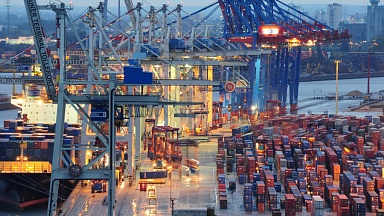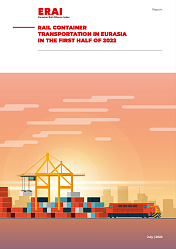The coronavirus crisis and its impact on EU car manufacturers
The automotive industry is one of the key sectors of the EU economy, especially in such countries as Germany, the Czech Republic, Belgium, etc. It accounts for 7% of EU GDP; 14.6 million people are directly or indirectly related to the automotive industry (6.7% of those employed in the EU); 440.4 billion euros are taxes from the automotive industry; 74 billion euros is the EU foreign trade balance in passenger cars. In addition, the automotive industry is the most knowledge-intensive, with 60.9 billion euros of investment in R&D annually, accounting for 29% of all investment in the EU. The state of the automotive industry also affects a number of related fields, from metallurgy to electronics, as well as transport. For a long time, the automotive industry has been the engine of growth. However, the year 2020 and the pandemic have had a significant effect on demand and, consequently, on production, which has fallen globally to the level of the years 2010 and 2011.
The European Union, a traditional automotive manufacturer, is still among the most important regions of the automotive industry in the world. European companies retain a competitive advantage in the global market, led by brands such as Volkswagen, BMW, Mercedes-Benz, Fiat, Peugeot Citroen and others, despite the emergence of new manufacturers, including in China. The automotive industry plays a special role in the socio-economic, scientific and technical development of the EU, it is characterized by an exceptional concentration of capital and is generally an integral part of the European Union economy: this industry generates 7% of GDP, not including related fields.
However, the European automotive industry faces many challenges. One of them is the decarbonization agenda: On 11 December 2019, the European Commission unveiled the European Green Deal, which includes a plan to reduce the carbon footprint of the EU and achieve carbon neutrality by 2050. If decarbonization issues are nothing new to the automotive field, the pandemic was a black swan for the industry and posed a unique challenge.
COVID restrictions hurt demand and lead to a decrease in car sales. Disruptions in commodity supply chains exacerbate the shortage of semiconductors needed for electronics in modern cars. According to automotive industry expert Professor Ferdinand Dudenhöffer from the University of Duisburg-Essen, the virus is the biggest threat to the global automotive industry in the past few decades.
Reduced demand for cars in the EU
The specific feature of the coronavirus crisis as applied to the automotive industry was its simultaneous impact on all economic factors. First, measures to fight the pandemic have significantly reduced the demand for new cars. World sales of passenger cars decreased by 15.3% – from 74.9 million to 63.4 million cars. In Europe, the decline was even worse and amounted to 20.6%. At the same time, the European Union market fell even deeper - by 23.7%, and the record sales decline occurred in the UK – by 29.4%, which can be attributed to the consequences of leaving the EU. In the countries of the European Free Trade Association (EFTA), the decline was 16.7%. Demand for passenger cars also decreased in China – by 6.8%.
Reduction in the car supply
Second, the coronavirus crisis has had an impact on supply. The reduction in car production was the result of decreased demand, as well as logistical disruptions and production restrictions to prevent the coronavirus. The supply has also declined, having experienced the complex influence of a number of factors.
After stoppages in spring and a slow restart in the third quarter, industrial production increased at the end of 2020 due to demand stimulus and the need for companies to recover and restock due to likely disruptions in supply chains. However, according to the European Automobile Manufacturers Association (ACEA), production of passenger cars in the EU in 2020 decreased by 23.3%, to 10.8 million cars, and in the whole Europe — by 22.3%. Ukraine (-33%) and Great Britain (-29.7%) showed the record decline.
Against this backdrop, China’s 6.4% fall in car production in 2020 was a success and a consequence of more rapid control of coronavirus outbreaks in the country. As a result, China remained the world leader in the production of passenger cars in quantitative terms.
According to IHS Markit, in 2022, passenger car production in Europe is expected to grow to 18.6 million (+161%), which will return production to pre-crisis levels. At the same time, some manufacturers claim that they have excess capacity, for example, the newly created company Stellantis. Thus, the recovery will be accompanied by some restructuring of the industry, due to continued disruptions in chip delivery, volatility in the raw material markets for the industry, primarily steel markets, and the introduction of electric and hybrid cars into the production lineup. In addition, increased demand in China and manufacturers’ desire to optimize production may change the location of European manufacturers’ facilities (nearshoring and onshoring).
State of trade in physical terms and share of rail freight
Trade in automotive products is one of the most important areas of EU-China trade, as well as one of the foundations of the cargo base of the Eurasian transit rail route. Therefore, the state of trade, the balance of freight traffic is in the field of special attention of both shippers and transport and logistics companies.
In physical terms, trade in goods of group 87 (vehicles) according to the Foreign Economic Activity Commodity Nomenclature (FEACN) is important for both the EU and China, especially in the context of freight traffic along the Eurasian rail route. Statistics show that EU exports in this commodity group surpass imports from China. However, imports have steadily increased over the past five years, stopping at 104 thousand tons in 2020. At the same time, exports from the EU to China amounted to 176 thousand tons.
Moreover, the share of rail freight in the composition of transportation means used to carry goods of commodity group 87 showed a positive dynamics. Whereas in 2015 the share of these goods in EU imports by rail was 0.77% in physical terms, today it has already exceeded 6%, and for exports the figure is now at 11%.
On the one hand, such dynamics is a reflection of the fundamental role of commodity group 87 in the utilization of the Eurasian railway route: precisely the automotive industry is one of the main clients of trans-Eurasian transit container rail services. On the other hand, the achievement of impressive rates of modal shift raises the question concerning the possibilities of further «pulling» of cargoes to the railroad.
To continue the modal shift, it will be important to capitalize on the environmental advantages of rail transportation, i.e. the willingness of automotive manufacturers to decarbonize their logistics chains. In addition, one should take into account the factor of China’s movement in the hierarchy of value chains: from the role of the «world conveyor» to becoming a center of independent automotive production with its own scientific and production base, despite the remaining advantages of the European automotive industry and the predominance of EU exports to China over imports.





